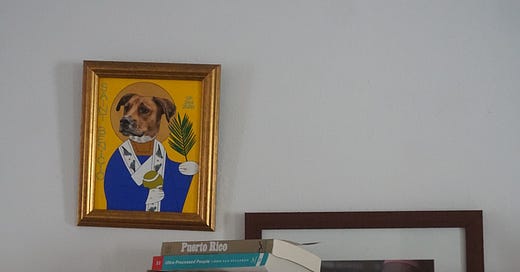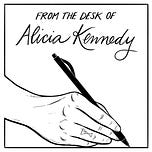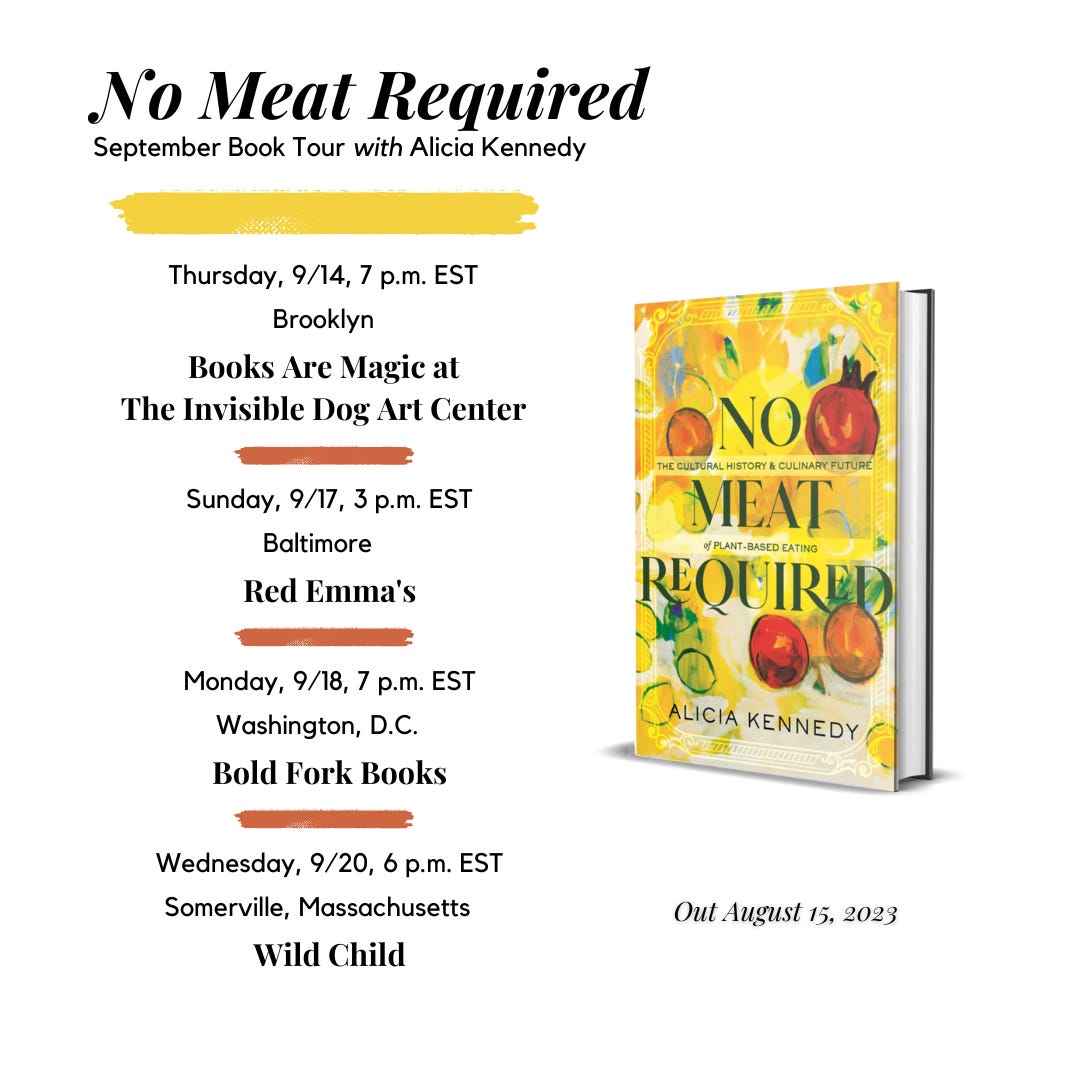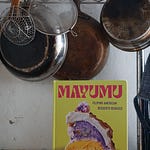When I started writing about food in 2015, I was vegan, and this was the only thing anyone seemed to care about. It was assumed (and occasionally still is) that I would be offended by the existence of omnivores, that I didn’t really know anything about food or cooking, and that I couldn’t be trusted with an assignment outside the realm of vegan food.
I was lucky to be able to convince some editors that there were really interesting stories to be found in the realms of nut-based cheeses, ethical chocolatiers, and vegetable-based food sovereignty projects. Then, the Village Voice brought me on as a contributing writer focused on vegan food in New York City (they were ahead of their time). Other food writers who were part-time or secret vegans and vegetarians would ask me to meet for drinks just to ask how I could do it; they felt that if they were open about their actual diets, it would keep them from getting work. How could they write about food and refuse a bite of steak?
This is no longer the case, thankfully. Though mainstream reviews of vegetarian restaurants still express incredulity about the deliciousness of food-without-meat, it’s far more common now to find folks working in food media who don’t eat meat or who have a considered relationship to their consumption of animals. This isn’t to say it’s not without its complications or there are no longer any prejudices, but it’s finally accepted that a person can give up meat and animal products and still love food, recognize good cooking, and have rich conversations on culinary culture. It’s been a grand shift, and my forthcoming book No Meat Required is meeting a very different world than the one of eight years ago, when I quit my full-time copyediting job to put all my energy into becoming a food writer.
One of the ways I recognized this change was the gradual ubiquity of vegetarian recipes with the byline Hetty McKinnon at outlets like Bon Appétit, the New York Times, and now her own “plant-powered” newsletter at the Washington Post. Her 2021 cookbook To Asia, With Love was received wildly well, and now she’s come out with Tenderheart: A Book About Vegetables and Unbreakable Family Bonds—a cookbook that explores grief and the ways in which we use food to navigate it.
I wanted to understand her approach, because though she’s now such a well-known recipe developer, her vegetarianism has never been the most significant part of her public profile; she’s been able to shoot and style her own cookbooks; and she’s even started a magazine called Peddler Journal. This DIY streak that we share—she came to food through launching a salad delivery business in her native Sydney, Australia; I came to food through my vegan bakery—meant we had an immediate rapport when we hopped on Zoom. I also loved getting to talk to her about how she cooks for her kids versus how she approaches recipe development for cookbooks or her own personal newsletter, To Vegetables, With Love.
The full audio is accessible above. The below selection has been condensed and lightly edited for clarity.
I want to hear about everything, because I feel like you came onto the scene, at least in the U.S., and all of a sudden you were everywhere—to me. In terms of like, your recipes were everywhere, your name was everywhere, you're a vegetarian, but it wasn't that being vegetarian was the most important thing about your work, which I found so, so game-changing. As a vegetarian, too, when you work in food, that tends to be the thing people introduce you with.
But To Asia, With Love, which was such a huge success, which I have right here, you know, it didn't say vegetarian on the cover—it's not in the title. You have to open the book up and then you learn that it's vegetarian. So this isn't my traditional first question, but can you talk a bit about why you went vegetarian and how being vegetarian has influenced your trajectory in food?
Yeah, so great question. I've been a vegetarian for most of my life, since I was a late teen. Before that, I ate every type of meat under the sun because I grew up in a very Cantonese household. And you know, on the daily, my mom would just, you know, she would make soup, tong. Before every meal, we had to have a bowl of soup, and sometimes one of those soups was pig intestine soup—just a really normal thing that we would eat. And I ate it without even thinking, and tripe and everything. So I was not squeamish around meat, but I think when I was—I think vegetarianism is probably not for everyone, but it's for me. I think I came to life when I became a vegetarian.
There was a moment—I just remember the smell of meat. And then it just dawned on me one day. I wanted to try it, [vegetarianism], and I've never really looked back. So I think I was about 18 or 19 at the time—I think I was 19.
At that point, my mom started vegetarianizing foods that I had grown up eating. I mean, food was a really huge part of my childhood. And my mom was always cooking. My dad was, as the narrative in Tenderheart, he worked at the markets.
So there was just an abundance around me all the time. But I think, the vegetarianism thing is always a personal decision. It's a very personal thing to me. So when I started to cook, and the first time I really cooked professionally, like outside of people in my family, was this salad delivery business I had in Sydney, in my old neighborhood. And for four years, I cycled salads around in little lunch boxes, vegetarian salads. And that's where this whole story began.
Even in those days, I didn't sell it as a vegetarian business. People would buy the salads and then they would say to me, oh gosh, I didn't even realize that they were vegetarian. So that's, to me, the hugest compliment. So with that as my foundation, I've really always wanted people to see my food as delicious flavor first. This is delicious from the point of view of flavor and texture and as a well-rounded meal, rather than, it's vegetarian.
I think—and obviously more of this has dawned on me as I've gone on in my career—but I remember when I wrote Community, which is my first book in Australia, and it was a self-published book—talking about DIY, as we did before we came on air—it was a very DIY book. I'd never written recipes before that. I just pulled this thing together with some friends, and originally it was just meant to be for my salad, the people that bought salads from me every day. And then it sold out very quickly my self-published copies, and then I was approached by a publisher and I remember the very first phone call. She called me out of the blue. I didn't know who she was, and, in that very first phone call, I said, “I don't want it on the vegetarian shelf.”
And it was a conversation very early on, because I think when you talk about vegetarianism and veganism in the mainstream, people think about what's missing. There's always this perception that it's not very good and that there's something missing, and so they're just trying to replace it with something else. And so in my food, there is no—we're not trying to replace anything. I don't start from a viewpoint of, I want to make chicken with vegetables and I just need to replace the chicken with something. That's just so far out of my realm of thinking.
So I guess as my career has progressed, I've really kind of shied away from presenting myself as a vegetarian cook or a vegan cook because — I'm not a vegan cook, I'm a vegetarian cook — because I really want to shine the light on vegetables first, which are my muse, like this is what inspires me, and flavor. They're the two most important things to me in in all of my recipes. For example, people have cooked from To Asia, With Love and someone said to me they'd cooked half the book before they realized it was vegetarian, which is a great compliment.
We were talking about DIY and I know you shot To Asia, With Love on film. Did you shoot Tenderheart as well?
I did, yeah.
How did that come to be?
I shot To Asia, With Love on film before the pandemic. My dad was a big photographer, an amateur photographer, but I used one of his cameras. I'm the only one of my—I’ve got two siblings, but they're really different—and so I realized a lot of the creative things that I have are from my parents. I've kind of taken all their creative things that they like.
My dad was a really interesting person. He came to Australia when he was a teenager and he was really into things: he was into photography—he had his own darkroom at home in our laundry; there was always photography equipment. I found a photo of him recently when we went on our first family trip to China when I was about 5 and he had this massive kind of video camera. He traveled with that, you know? And so I just always loved photography, but I've always had his film camera. So I used several film cameras; I've got several of them now.
I shot To Asia, With Love on film. It was kind of chaotic because you don't know whether you've got anything good. So I backed up everything on digital, which kind of goes against the grain of film photography, but I actually didn't use any of the backups. Even so, it was good enough, even if it was a bit blurry. I really wanted to create that aspect of home, you know, in To Asia, With Love. I felt that was really important.
For Tenderheart, a lot of it was shot kind of towards the end of—not that COVID has really ended but, I think 2021—and so I just wanted to avoid a lot of that film flying all over the country and stuff like that. And so there's these kind of still-lives—I don't know if you noticed.
Only the PDF. It's in color, but I haven't seen it in its full glory yet.
So there's 22 vegetables. And with every vegetable, I did this still-life. It's a little weird, but there's a little clay pot, which I've had since I was a kid, and my mom makes congee, baby congee, she calls it—little congee—but it's a very thick version of congee that she makes for my kids. So she gave it to me, and that's what we used to do when the kids were young. And so I have this clay pot, and so I put every vegetable that's featured, I put them in the clay pot, somehow. Some of them didn't fit and I took a still-life with it. So they're all on film in the book, but the rest of the photos are all digital. And I did want to create—I’m one of those people who never wants to do something twice. So because I've already done the film book. I didn't do it again.
So this one I wanted to create—and I must say, I'm not a photographer; I'm not a stylist. This is just the food, how it's cooked and how it's shot. So it's not really styled at all. But what I do think it's very approachable, like a lot of people saying, Oh, I love that I can create it at home exactly the way it looks in your book. So for me, it's just because of my process and the way I work. I've just found it much easier to create a book this way. And creatively, too, I always have a vision of what I want. And I knew, with the earlier books, I started feeling frustrated sometimes when the pictures didn't turn out the way I wanted them to or or whatever. It's really hard when you're shooting with a team.
So yeah, I just, it's DIY. I think it's really charming. I wanted a really sparse look for the photos. I really wanted to really strip to nothing in the background. I wanted, almost—because I love the artistic side of food and books; I love Phaidon books, the way they shoot food. It's very sparse, it's very minimal, and it's very much about the food on the plate. So that's really what I wanted to do with this book.
How does your inspiration develop? Is there a line between your daily cooking with your family and your professional recipe development life?
It kind of bleeds into the other because, often—well, my family has to eat everything I cook. So we eat everything [from] all the developed recipes, and then some of it comes from things that I make for the family that I've decided is really good and I need to include it somewhere. So yeah, it all bleeds into each other.
I've got three kids and they're teenage age, so they're not as fussy as they used to be, but they still like things I don't like. One of the kids doesn't like eggplant or like mushrooms. You know, he doesn't like slippery foods, textures. So I can't develop an eggplant recipe and expect him to lap it up, like you would a bowl of pasta.
It does bleed into each other, but I think when I cook for the family, everything—every home cook has a repertoire.
I think my daughter said to me the other day—I bought a pack of green split peas the other day. I don't normally buy split peas, but I bought it and I became fixated with what I was going to do with these packets of green split peas for some reason and I thought, I don't want to make soup. Everyone makes soup with split peas. So what am I going to do with this? I made a salad, which was super delicious, and then with the other half, I did make a soup. I added Thai curry to it and it was like a different version of a split pea soup—it was really good, actually. My daughter commented that night, “Oh, I love that, you should add that to your repertoire.” And I thought, Oh, I have a repertoire…? She's like, “It's not like one of your typical dishes.” And I was like, what's one of my typical dishes? And she said, “Oh, like that spinach curry thing you do,” which is just like, Oh, yeah, that's true, that is something I make all the time.
I still think I do have a repertoire that is like the family meals, the things that I'll turn to if I can't think, because everyone knows how many recipes you've written. Some days you still go, I don't know what to cook! I do kind of rely on some of those recipes.
It's funny, because sometimes I'll post something on Instagram and my kids will go, “I didn't eat that, when did you do that?” And I was like, “Oh, it could have been the day you didn't come home for dinner” or like, you know, “I could have eaten it for lunch.” It's funny when they notice things that they don't acknowledge that they've actually eaten.
This Friday’s From the Kitchen dispatch for paid subscribers will include plant-based cooking ideas for hot weather, the kind of stuff I’ve been doing with beans, tofu, jackfruit, and cabbage over weeks of daily 90-degree heat. Maybe I’ll even talk about the phenomenon of “girl dinner,” which is nothing new!
Now that we’re less than one month (!!!) out from the release of No Meat Required, there will be extra perks for paid subscribers: giveaways of an annotated galley and a set of By Ren pearl cocktail picks, plus a Zoom reading and Q&A to come for those whose cities I won’t be visiting on my book tour.
See the recipe index for all recipes available to paid subscribers. $30 per year.
News
I talked to one of my favorite podcasts, Everything Cookbooks, about my forthcoming book No Meat Required! It gets into the nitty-gritty of writing process, research, and balance. So much fun.
Backslash asked me to write the foreword to their report, “The Future of Food.” I focused on the necessity of people with disparate views having better, deeper conversations and working together—with historically marginalized folks always in the front, leading those conversations. I’m historically quite bad at talking to folks I disagree with about food issues—it was a learning exercise for me!
I’ll be in conversation with the fabulous author of Small Fires: An Epic in the Kitchen Rebecca May Johnson this Wednesdy, July 19, on Zoom through D.C.’s Bold Fork Books (where I’ll be making a live appearance on my book tour in September). Tickets are available!
My small capsule jewelry collection with By Ren, whose designs are handmade to order in Philadelphia, is live through the end of 2023. I wear the peas in a pod ring daily and the perla choker to go out.
Reading
I devoured Joanna Walsh’s Girl Online, which sent me back to Sianne Ngai’s Theory of the Gimmick, which really gives my brain a workout!
Cooking
I made Ria Elciario’s sticky sesame tofu, but I baked the tofu before tossing it in the sauce on the stove, and it was fantastic!!! A new house staple, for sure.













Share this post